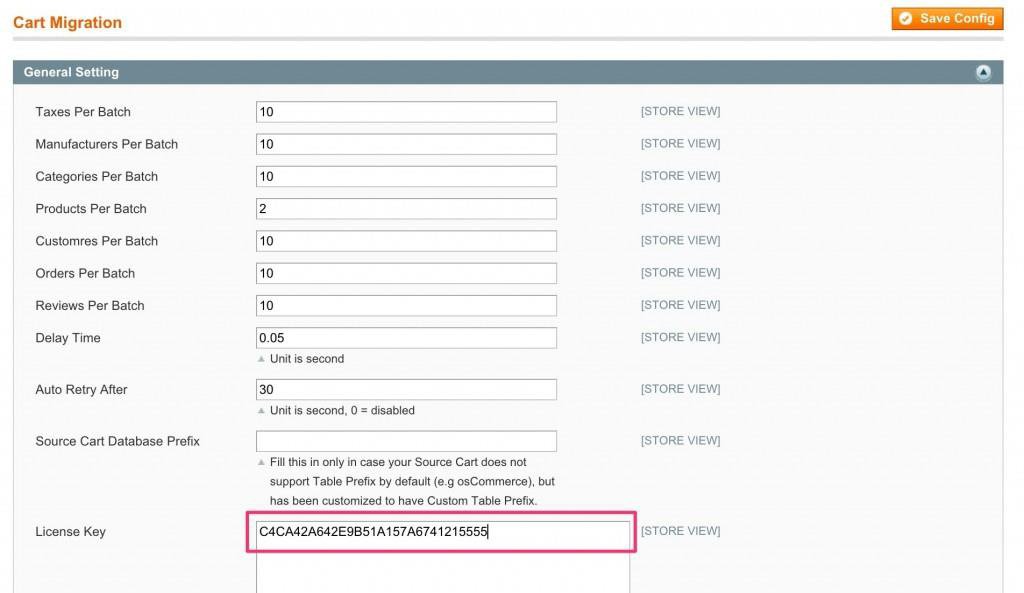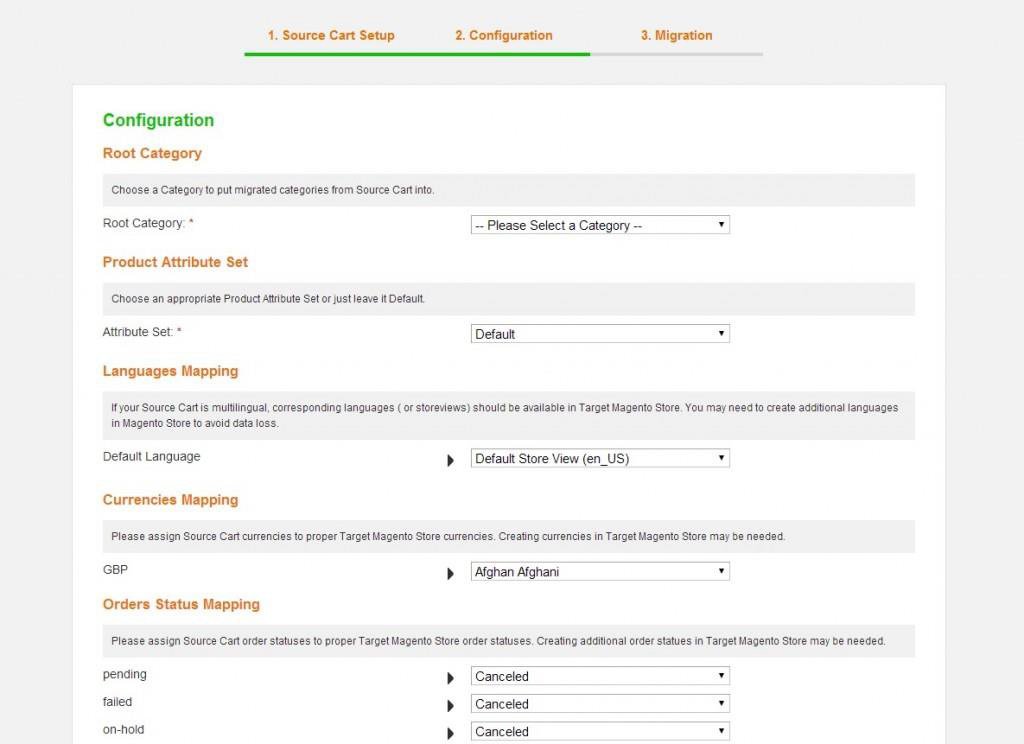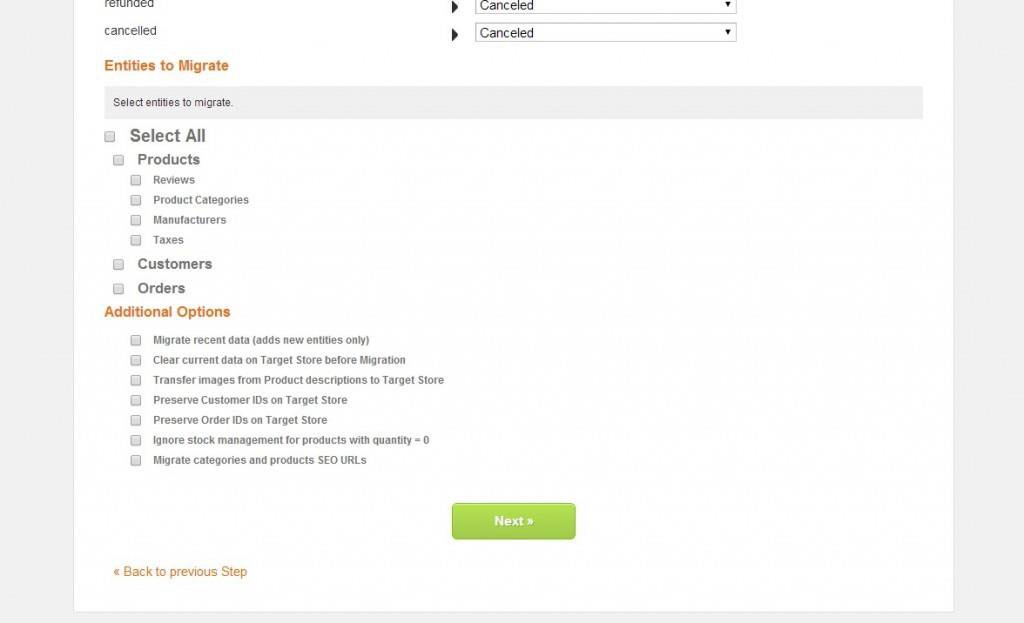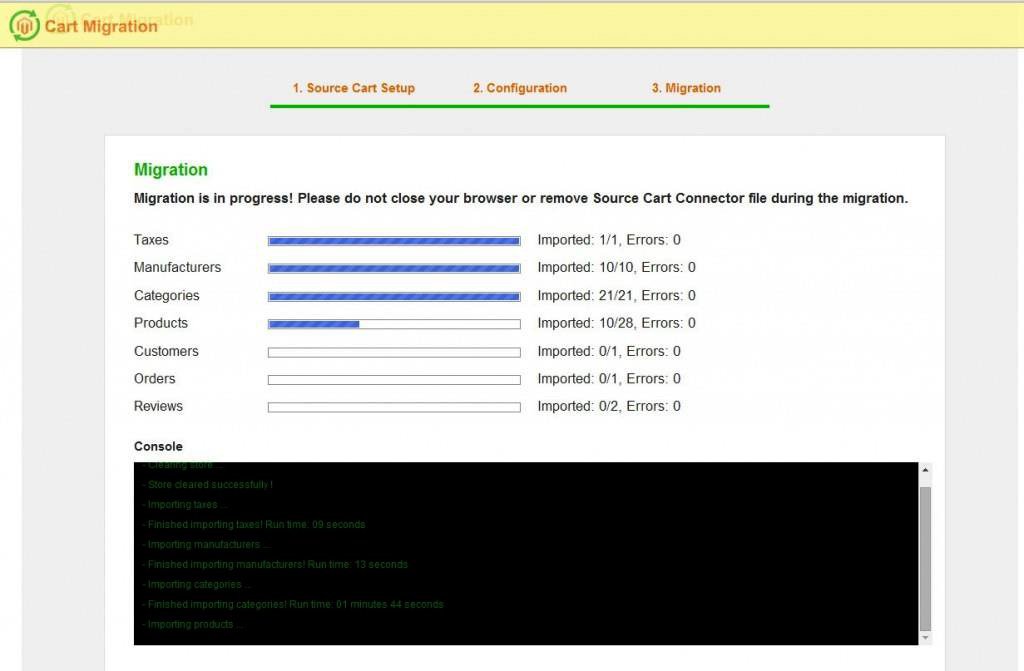15 Mar, 2023 | Magento development
Migration From Amazon Webstore To Magento 2.0

Prerequisites For Migrating Your Amazon Store To Magento 2.0
Migrating your Amazon store to Magento 2.0 can be a complicated process, and there are several things you must keep in mind before embarking on the migration. Tip 1: First, you must confirm that your existing Amazon web store is compatible with Magento 2.0 and examine whether any extensions or third-party integrations you presently use are also consistent with Magento 2.0. Tip 2: Next, you must decide which data you have to migrate to Magento 2.0 and make sure that you have a steadfast migration plan to move your data correctly and safely. Tip 3: Then you must consider how you'd like your Magento 2.0 store to appear and feel, and decide whether you wish to retain your current design or execute a new one. If you intend to customize your Magento 2.0 store, make sure you have the required dexterity or resources to do so. Tip 4: It is also important to pick the most suitable time to migrate your Amazon web store to Magento 2.0, considering any extreme periods for your business, seasonal changes, and other factors that may affect your sales. Creating a budget for your Magento 2.0 migration project, considering the fee of any third-party extensions, design and development work, and other related costs. Also, before launching your Magento 2.0 store, ensure you comprehensively test all parts of your site, such as functionality, user experience, and performance. Furthermore, If you lack the required technical expertise in-house, think about employing a skilled Magento 2.0 migration service provider to help you with the migration process.Step-By-Step Guide For Amazon Web Store To Magento Migration
Migrating your Amazon web store to Magento 2.0 is a complicated process. However, it can likewise turn out to be an ideal opportunity to upgrade your online store's performance, capabilities, and functionality. Nevertheless, following the proper steps ensures a well-ordered and successful migration. This guide will summarize the steps you must follow to conveniently migrate your Amazon web store to Magento 2.0, such as evaluating your data migration needs, testing the migration process, and training your team for the transition.Step 1 - Preparation
Before going ahead with the Amazon web store to Magento 2.0 migration, you must pay heed to the below settings and do the following preparation:- Make sure you have created a backup of your Amazon web store.
- Assess your data migration needs, such as product information, appropriate Amazon pay settings, customer data, ipn url, order history, Amazon pay extensions, payment details, integration settings, and configuration settings.
- Pinpoint if you have made any front-end customization on your Amazon web store, such as themes and extensions, and review their compatibility with Magento 2.0.
- Examine the hosting environment because Magento 2.0 has distinct hosting requirements, such as PHP and MySQL versions, and make sure your hosting environment has been set correctly and fulfills the needs before migrating.
- Prepare the migration timeline by devising a detailed strategy that delineates the migration process's steps and time frame, including testing and training periods.
- Permission to upload files to the Amazon Webstore store.
- Permission for Magento in order to access the connector.
- PHP Compatibility: PHP 5.3 and so on.
Step 2 - Setup
In order to create a perfect setup for your Magento 2.0 store, you will first have to download a Magento migration tool. To give you an example, we'll be using "LitExtension" throughout the guide so that you can follow the same steps and employ them later when migrating your Amazon web store to Magento 2.0. Next, you will have to extract the ZIP file that you have downloaded from the LitExtension store. Then you will have to install cart migration but ensure you have installed it successfully by following the correct installation procedure. Follow these steps for Magento 1 to Magento 2.0 migration:- Step 1: First, you'll have to access your Magento store using an FTP program and either copy or upload all folders in the zip package to your Magento site root folder. It won't result in automatic file transfer or overwrite any current files, but will only add new files to the folder structure.
- Step 2: In the SSH console of your new server, you'll have to navigate to the store root folder, for example: cd path_to_the_store_root_folder.
- Step 3: Clean the store cache and then log out from the Backend and log in again.
- Step 4: Permit Admin Account Sharing to make sure the migration progress won't be intercepted when you log in to Admin from any other device or place. Now go to Backend> Stores > Configuration > Advanced Tab > Admin > Admin Account Sharing change to "YES."
- Exporting Products to CSV Files
- First, sign in to your Amazon Webstore admin account.
- Then go to https://your_shop_domain/api/1/commerce/products
- And copy the text and save it as a file, for example, "Products.txt."
- Continue to the Import Data step of Migration.
- Upload Products.txt file.
- Move to the next step of the Migration.
- Exporting Order to CSV Files
- Again, do the same. Sign in to your Amazon Webstore admin account.
- Then go to Commerce -> Orders and click the "Export CSV" button, which you can find on the top.
- Save or download the file on your desktop.
- Move to the Import Data step of Migration.
- Upload Orders.csv file.
- Then move to the subsequent step of your Migration.
Step 3 - Finding And Using The License Key:
The License Key is an encoded string you'll get with your download package. This key is required to activate your Migration Tool. After you have purchased the product, log in to the store (that you are using for migration) and go to the "My downloadable products" section. There you will see the download link and licence key for your download package. Next, you'll have to log in to your Magento Target Store backend, click on Cart Migration > Configuration, and then copy and paste your licence key.
Next, you'll have to log in to your Magento Target Store backend, click on Cart Migration > Configuration, and then copy and paste your licence key.

Step 4 - Final Migration Process:
Now let's move to the Amazon Webstore Setup. First, you will have to fill out all the required information in the setup table:- Cart URL: Your Amazon Webstore URL
- Importing your files 4.2

- Root Category: The existing Magento store's category to import the entire Amazon Webstore categories.
- Product Attribute Set: choose an Attribute Set which will be employed to import products; all crucial attributes in the migration process will be made into this set.
- Languages Mapping: If your Amazon Webstore is multilingual, related languages must be there in the Target Magento Store. You may have to develop extra languages in the Magento Store in order to evade data loss.
- Currencies Mapping: Allocate Amazon pay Webstore currencies to accurate Target Magento Store currencies. Making currencies in Target Magento Store might be required.
- Orders Status Mapping: Allocate Amazon Webstore order statuses to appropriate Target Magento Store order statuses. Making extra order statues in Target Magento Store might be required.
- Entities to Migrate: pick all entities to migrate or simply a portion of them.
 The migration will happen automatically in this last step. To continue, you must not close your browser or extract Source Cart Connector. After finishing the migration, click “Clear Cache and ReIndex Data” to complete.
The migration will happen automatically in this last step. To continue, you must not close your browser or extract Source Cart Connector. After finishing the migration, click “Clear Cache and ReIndex Data” to complete.
 That’s all for now, which can be done independently.
That’s all for now, which can be done independently.
Data Migration Prerequisites: List All The Data That You Can Conveniently Migrate from Amazon Store to Magento 2.0
When you are migrating your Amazon Web store to Magento 2.0, you can easily migrate the following data:- Products and Categories: You can migrate all your product and category information, such as SKUs, product descriptions, images, prices, as well as stock levels.
- Customer Data: You can also migrate all your customer's information, such as names, email addresses, shipping and billing addresses, and order history.
- Orders: You can migrate order details as well, for example, order number, product information, shipping and billing details, payment information, and order status.
- Reviews: You can migrate customer reviews and ratings for your products too.
- Content Pages: You can migrate all your static content pages, including about us, contact us, and other pages.
- Tax Rules: You can migrate tax rules and rates relevant to your Amazon store.
- Payment and Shipping Techniques: You can migrate your payment and shipping techniques employed in your Amazon store to Magento 2.
- Coupons and Discounts: You can migrate your coupon and discount codes.
- SEO Data: You can even migrate your SEO data, such as meta titles, meta descriptions, and keywords.
Why Is It A Great Idea To Migrate Your Amazon Web Store To Magento 2.0?
Migrating Amazon Web Store to Magento 2.0 is a great idea and can give you multiple benefits, some of which are summarized below:- Enhanced Speed and Performance: Magento 2.0 has been optimized for quicker page loading times and enhanced overall performance, which can enhance the user experience for your customers and result in increased conversion rates.
- Improved Security: Magento 2.0 has improved security features such as two-factor authentication, enhanced hashing algorithms, and enhanced encryption protocols to safeguard your online store from likely cyber threats.
- Enhanced User Interface: Magento 2.0 delivers a more intuitive and user-friendly interface that is simple to navigate and customize, permitting you to create an exceptional and engrossing shopping experience for your customers.

- Improved Mobile Responsiveness: With more and more people shopping online from their mobile devices, Magento 2.0 has been developed to be completely responsive, guaranteeing that your store looks amazing and works flawlessly on any device.
- Cutting-Edge SEO Capabilities: Magento 2.0 has state-of-the-art SEO abilities that can enhance your website's search engine rankings and drive more traffic to your online store.
- Customization Choices: Magento 2.0 delivers more customization options than ever, letting you personalize your store per your needs and create an awe-inspiring online shopping experience.
Benefits of Amazon Store To Magento Migration
Integrating your Amazon store with Magento 2 can be a great option that can give you multiple benefits. Benefit #1: Manage inventory from a centralized platform When you integrate your Amazon store with Magento 2, you can manage and organize your products, orders, customers, and inventory from a centralized platform, making handling your online business more manageable. Benefit #2: Market Your Products on Multiple Sales Channel Integrating your Amazon store with Magento 2 allows you to market your products on numerous channels, such as your own website, Amazon, and other marketplaces, enabling you to reach a vaster audience and drive more sales. It can also help you retain track of your inventory levels and avoid overselling, guaranteeing that you always have sufficient stock to meet customer orders and offers amazing custom templates too. Benefit #3: Automate Order Processing Moreover, you can automate your order processing workflows, decreasing the chance of blunders and saving you time and effort. Merging your Amazon store with Magento 2 provides a seamless and uniform customer experience across all your sales channels, ensuring that your customers have a joyful experience when interacting with your brand. Ultimately, integrating your Amazon store with Magento 2 can assist you in streamlining your operations, expanding your reach, and providing a more satisfactory customer experience, eventually resulting in improved sales and earnings for your business. Benefit #4: Get Access To Advanced Reporting Tools You can also access state-of-the-art reporting and analytics tools to track your sales, customer behavior, and other fundamental metrics to help you make data-driven decisions to expand your business.
Things To Keep In Mind Before Migrating Your Amazon Store To Magento 2.0
Before you go ahead with migrating your Amazon web store to Magento 2.0, there are some things that you must keep in mind, and they are as follows:- Devise Your Magento Migration Strategy: First, you must devise a thorough strategy that recapitulates the procedure of migrating from the Amazon web store to Magento 2.0. The strategy must have the time frame, resources needed, and the steps involved in the migration.
- Evaluate the Data Migration Prerequisites: You will have to assess the data needed to migrate, such as product information, customer data, order history of customer groups, and payment details. Make sure that you have all the required data to carry on with the migration.
- Assess the Hosting Environment: Magento 2.0 mandates distinct Hosting provisions, such as PHP and MySQL versions. Make sure that your Hosting environment fulfils the prerequisites before migrating.
- Test the Magento Migration Process: Before migrating, you should definitely test the process to assure that everything functions as anticipated. Test the data migration, extensions, themes, and customization to bypass any problems during the final migration.
- Assess Compatibility: Review if your Amazon web store's extensions, themes, and other customizations are compatible with Magento 2.0. You may have to upgrade them or discover options that are compatible with Magento 2.0.
- Be Ready for Downtime: The Magento migration process may need downtime, during which your website might be inaccessible to customers. Schedule things accordingly to counteract the effect on your business.
- Instruct Your Team: Coach your team on using Magento 2.0, including managing products, customers, orders, and other essential tasks.
Take Data-Driven Decisions With WEDOWEBAPPS
Migrating your Amazon Web Store to Magento 2.0 can be a smart decision for businesses that seek to grow their online presence and equip their customers with an improved shopping experience. While the Amazon web store to Magento migration process may be demanding and need a considerable investment of time, effort, and up-to-date resources, the advantages of the transition can far outrank the expenses. With Magento 2.0, businesses can benefit from a more adaptable, scalable, and customizable platform that can assist them in achieving their e-commerce objectives. Besides, with Magento's vast ecosystem of extension installation and integrations, businesses can improve their store's functionality and optimize their operations. Thus, if you are thinking about migrating from Amazon Web Store to Magento 2.0 or want to build your ecommerce store it is important to carefully assess your alternatives and operate with WEDOWEBAPPS LLC only to guarantee a seamless transition that satisfies all your business requirements.Frequently Asked Questions
Migrating from the Amazon web store to Magento 2.0 can furnish businesses with a more adaptable, scalable, and customizable platform that lets them optimize their online store's functionality and deliver their customers a more satisfactory shopping experience. Magento 2.0 likewise offers multiple extensions and integrations to assist enterprises in improving their store's features and facilitating their operations.
The migration fee can differ depending on some factors, including the size of your store, the intricacy of your data, and the magnitude of customizations needed. Generally, the migration process involves employing skilled people, buying a Magento license, and investing in new hosting and infrastructure. Nevertheless, the fee of migration can be outranked by the advantages of the transition in the long run.
The migration process can take about a few weeks to a month, depending on the complicatedness of your store's data and the level of customization needed. Determinants such as data mapping, theme customization, extensions, and integrations can impact the time span of the migration process.

